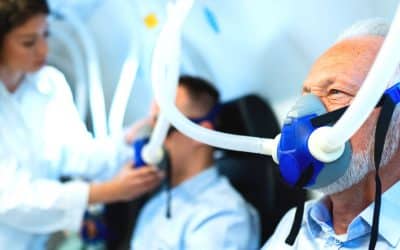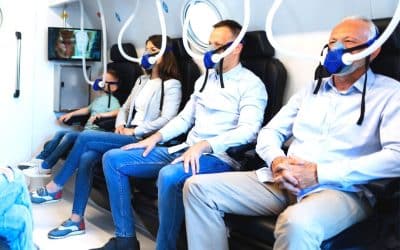Healthy Aging
Aging is defined as steady, progressive decline in mental and physical function due to physiological degeneration. Although many believe that this decline is unavoidable, there are steps you can take to minimize and slow the aging process (and maybe even reverse it). At its core, age-related decline is a result of harmful changes in molecular structure and function caused by many factors. These changes not only increase one’s risk of neurodegeneration and disease, but result in biochemical wear and tear to our tissues and organs. In response, our bodies elicit an inflammatory response, which accelerates the aging process further(1).Decreasing harmful inflammation, enhancing your body’s ability to heal, and improving brain wave activity are a few of the highly effective ways to fight back against the damaging effects of aging.
Extivita Therapies for Healthy Aging:
Extivita Therapies for Healthy Aging:

Hyperbaric Oxygen Therapy

Neurofeedback
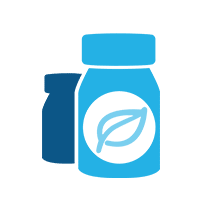
Supplements

Nutritional IV Therapy

Pulsed Electromagnetic Field Therapy
Listen to Carrie’s experience with Hyperbaric Oxygen Therapy for Healthier Aging
Hyperbaric Oxygen Therapy for Healthy Aging:

The biological process of aging occurs as our cells’ chromosomes progressively shorten during cell division, diminishing their physiological capacity. At the cellular level, telomere shortening and cellular senescence are two hallmarks of aging. This degenerative state is accompanied by stem cell depletion, inflammation and metabolic dysfunction(1).
At a certain point, the telomeres become so short that cells stop dividing. Oxidative DNA damage and stress, which are linked with lifestyle choices as well as genetic and environmental factors, hasten telomere shortening and dysfunction(2). The intermittent application of HBOT decreases oxidative stress by inducing increase expression of antioxidant enzymes and anti- inflammatory proteins(3).
Recent research show that HBOT, under certain protocols, can induce telomere lengthening significantly and decrease the number of senescent cells, reversing the two principle biological processes associated with aging(4).
Ask us about our telomere testing program.
Effects of HBOT on Healthy Aging:
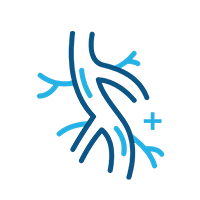
New Blood Vessel Formation
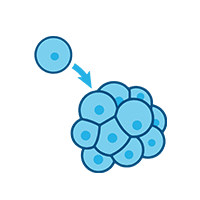
Increased Stem Cell Activity

Decreased Inflammation
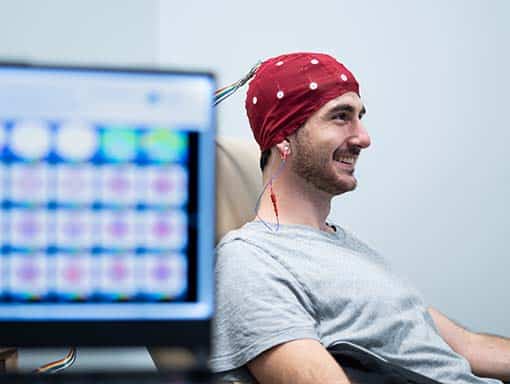
Neurofeedback for Healthy Aging:
Neurofeedback can prevent and/or reduce cognitive decline and other issues that occur as we age. Protocols typically involve decreasing theta brain waves and increasing high alpha and beta brain waves to correct for age-related EEG abnormalities(3-8). Neurofeedback can also reduce non-EEG-related changes that occur as we age, such as less efficient neural connectivity, brain tissue deterioration, and elevated cortisol levels(9-13). These changes impair processing speed and executive functions, especially those like memory and attention(10-13). Neurofeedback can reduce these impairments by strengthening neural connections, increasing nerve tissue volume, and decreasing cortisol levels(14-17). Lastly, neurofeedback can help poor sleep quality and sleep duration, both of which are common effects of aging(18-20).
Common EEG Abnormalities Associated with Aging:
- Increased theta activity (4-7 Hz)
- Decreased peak alpha frequency (10-12 Hz)
- Decreased beta activity (15-20 Hz)
IV Therapy for Healthy Aging:
The Myer’s Cocktail IV and Glutathione IV can provide protective effects against age-related impairment. Although our bodies have innate protective and repair mechanisms such as enzymes and antioxidants, these mechanisms start to deteriorate over time significantly increases our risk of to age-related damage. While these protective mechanisms weaken, our bodies are exposed to toxins, and levels of harmful free radicals and reactive oxygen species (ROS) increase. Both free radicals and ROS rapidly accelerate the aging process. The Myers Cocktail IV contains vitamin C (an antioxidant) and other nutrients and minerals, and the Glutathione IV is powerful antioxidant itself. Both these IV’s actively decrease free radical levels, inflammation, and the cellular damage that can lead to aging and disease(21).

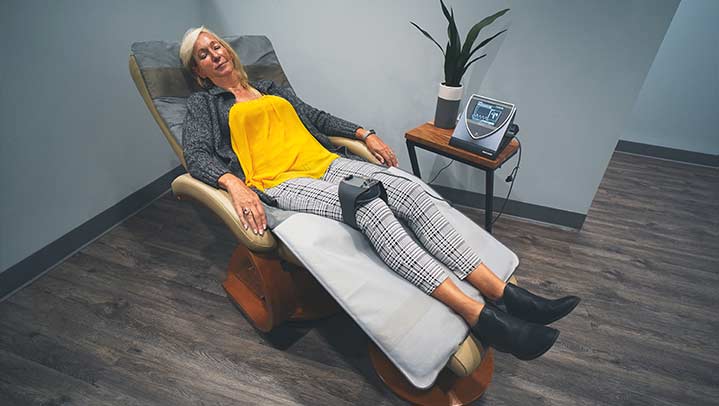
Pulsed Electromagnetic Field Therapy for Healthy Aging:
Pulse electromagnetic field therapy (PEMF) can help with several issues that occur with aging due to its effects on microcirculation and anti-inflammatory properties. Microcirculation, which refers to the blood flow through your smallest arteries and veins, has been shown to decline with age(22). Microcirculation provides your tissues with blood, oxygen, and nutrients while also removing harmful toxins, so healthy levels are essential. When microcirculation decreases, your body cannot heal injuries effectively, respond to stress well, and your risk of neurological diseases increases(22, 23). PEMF also decreases inflammation, which can cause serious damage to your cells.
News & Research for Healthy Aging:
Anti-Aging with Hyperbaric Oxygen Therapy
As we age, many seek ways to maintain vitality, slow the aging process, and boost overall health. One promising approach gaining attention is Hyperbaric Oxygen Therapy (HBOT), which involves breathing 100% oxygen in a pressurized chamber. Not only has it shown...
Aviv Clinics Announces New Global Aging Consortium of Internationally Recognized Researchers to Advance Innovations in Healthy Aging
ORLANDO, Fla., Nov. 28, 2022 (GLOBE NEWSWIRE) -- Aviv Clinics, one of the most advanced brain research and medical clinics in the world, today announces the formation of a new Global Aging Consortium, bringing together several of the world’s leading researchers on...
How hyperbaric oxygen therapy can aid with a range of conditions
By Regional One Health December 01, 2022, 12:00am CST Oxygen is crucial to life: the air we breathe, the water we drink, the ground we walk on. Harnessed properly, it also has the power to heal. Inside Regional One Health’s Wound Care Center, patients with a vast...
References
Chakravarti, Deepavali et al. “Telomeres: history, health, and hallmarks of aging.” Cell vol. 184,2 (2021): 306-322. doi:10.1016/j.cell.2020.12.028
Lin, Jue, and Elissa Epel. “Stress and telomere shortening: Insights from cellular mechanisms.” Ageing research reviews vol. 73 (2022): 101507. doi:10.1016/j.arr.2021.101507
Thom, Stephen R. “Oxidative stress is fundamental to hyperbaric oxygen therapy.” Journal of applied physiology (Bethesda, Md. : 1985) vol. 106,3 (2009): 988-95. doi:10.1152/japplphysiol.91004.2008
Hadanny, Amir, and Shai Efrati. “The Hyperoxic-Hypoxic Paradox.” Biomolecules vol. 10,6 958. 25 Jun. 2020, doi:10.3390/biom10060958
- Godman, Cassandra A et al. “Hyperbaric oxygen treatment induces antioxidant gene expression.” Annals of the New York Academy of Sciences vol. 1197 (2010): 178-83. doi:10.1111/j.1749-6632.2009.05393.x
- Hadanny, Amir et al. “Cognitive enhancement of healthy older adults using hyperbaric oxygen: a randomized controlled trial.” Aging vol. 12,13 (2020): 13740-13761. doi:10.18632/aging.103571
- Marlats, Fabienne, et al. “SMR/Theta Neurofeedback Training Improves Cognitive Performance and EEG Activity in Elderly With Mild Cognitive Impairment: A Pilot Study.” Frontiers in Aging Neuroscience, vol. 12, June 2020. PubMed Central, doi:10.3389/fnagi.2020.00147.
- Rathee, Sushma, et al. “Peak Alpha Frequency in Relation to Cognitive Performance.” Journal of Neurosciences in Rural Practice, vol. 11, no. 3, July 2020, pp. 416–19. PubMed Central, doi:10.1055/s-0040-1712585.
- Becerra, Judith, et al. “Neurofeedback in Healthy Elderly Human Subjects with Electroencephalographic Risk for Cognitive Disorder.” Journal of Alzheimer’s Disease, vol. 28, no. 2, IOS Press, Jan. 2012, pp. 357–67. content.iospress.com, doi:10.3233/JAD-2011-111055.
- Lavy, Yotam, et al. “Neurofeedback Improves Memory and Peak Alpha Frequency in Individuals with Mild Cognitive Impairment.” Applied Psychophysiology and Biofeedback, vol. 44, no. 1, 2019, pp. 41–49. PubMed, doi:10.1007/s10484-018-9418-0.
- Jang, Jung-Hee, et al. “Beta Wave Enhancement Neurofeedback Improves Cognitive Functions in Patients with Mild Cognitive Impairment.” Medicine, vol. 98, no. 50, Dec. 2019. PubMed Central, doi:10.1097/MD.0000000000018357.
- Beta Neurofeedback Training Improves Attentional Control in the Elderly – Jacek Bielas, Łukasz Michalczyk, 2020. https://journals.sagepub.com/doi/abs/10.1177/0033294119900348. Accessed 26 Oct. 2020.
- “How the Aging Brain Affects Thinking.” National Institute on Aging, http://www.nia.nih.gov/health/how-aging-brain-affects-thinking. Accessed 12 Nov. 2020.
- Fjell, Anders M., et al. “The Disconnected Brain and Executive Function Decline in Aging.” Cerebral Cortex, vol. 27, no. 3, Oxford Academic, Mar. 2017, pp. 2303–17. academic.oup.com, doi:10.1093/cercor/bhw082.
- Sala-Llonch, Roser, et al. “Changes in Whole-Brain Functional Networks and Memory Performance in Aging.” Neurobiology of Aging, vol. 35, no. 10, Oct. 2014, pp. 2193–202. ScienceDirect, doi:10.1016/j.neurobiolaging.2014.04.007.
- Farokhian, Farnaz, et al. “Age-Related Gray and White Matter Changes in Normal Adult Brains.” Aging and Disease, vol. 8, no. 6, Dec. 2017, pp. 899–909. PubMed Central, doi:10.14336/AD.2017.0502.
- Yiallouris, Andreas, et al. “Adrenal Aging and Its Implications on Stress Responsiveness in Humans.” Frontiers in Endocrinology, vol. 10, Feb. 2019. PubMed Central, doi:10.3389/fendo.2019.00054.
- Enriquez-Geppert, Stefanie, et al. “EEG-Neurofeedback as a Tool to Modulate Cognition and Behavior: A Review Tutorial.” Frontiers in Human Neuroscience, vol. 11, Frontiers, 2017. Frontiers, doi:10.3389/fnhum.2017.00051.
- Davelaar, Eddy J. “Mechanisms of Neurofeedback: A Computation-Theoretic Approach.” Neuroscience, vol. 378, May 2018, pp. 175–88. ScienceDirect, doi:10.1016/j.neuroscience.2017.05.052.
- Ghaziri, Jimmy, et al. “Neurofeedback Training Induces Changes in White and Gray Matter.” Clinical EEG and Neuroscience, vol. 44, no. 4, Oct. 2013, pp. 265–72. PubMed, doi:10.1177/1550059413476031.
- Bennett, Cathlyn N., et al. “Clinical and Biochemical Outcomes Following EEG Neurofeedback Training in Traumatic Brain Injury in the Context of Spontaneous Recovery:” Clinical EEG and Neuroscience, SAGE PublicationsSage CA: Los Angeles, CA, Dec. 2017. Sage CA: Los Angeles, CA, journals.sagepub.com, doi:10.1177/1550059417744899.
- Mander, Bryce A., et al. “Sleep and Human Aging.” Neuron, vol. 94, no. 1, Apr. 2017, pp. 19–36. ScienceDirect, doi:10.1016/j.neuron.2017.02.004.
- Hoedlmoser, Kerstin, et al. “Instrumental Conditioning of Human Sensorimotor Rhythm (12–15 Hz) and Its Impact on Sleep as Well as Declarative Learning.” Sleep, vol. 31, no. 10, Oct. 2008, pp. 1401–08.
- Schabus, Manuel, et al. “Enhancing Sleep Quality and Memory in Insomnia Using Instrumental Sensorimotor Rhythm Conditioning.” Biological Psychology, vol. 95, Jan. 2014, pp. 126–34. ScienceDirect, doi:10.1016/j.biopsycho.2013.02.020.
- Covarrubias-Pinto, Adriana et al. “Old Things New View: Ascorbic Acid Protects the Brain in Neurodegenerative Disorders.” International journal of molecular sciences vol. 16,12 28194-217. 27 Nov. 2015, doi:10.3390/ijms161226095
- Bentov, Itay, and May J. Reed. “The Effect of Aging on the Cutaneous Microvasculature.” Microvascular Research, vol. 100, July 2015, pp. 25–31. PubMed Central, doi:10.1016/j.mvr.2015.04.004.
- Erdener, Şefik Evren, and Turgay Dalkara. “Small Vessels Are a Big Problem in Neurodegeneration and Neuroprotection.” Frontiers in Neurology, vol. 10, Aug. 2019. PubMed Central, doi:10.3389/fneur.2019.00889.


